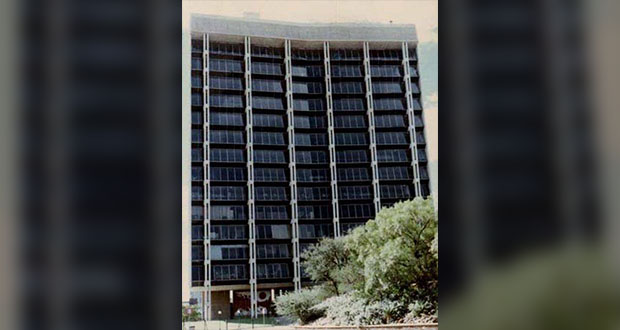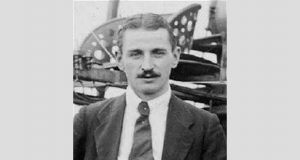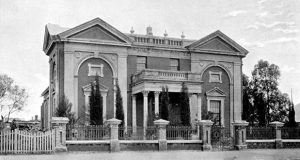UPDATED: 25/11/2022
25 November 1885, The railway line from the Cape reaches Kimberley.
25 November 1888, John Larkin Fry, Chief of Detective Department, dies.
25 November 1899, The first battle of Carter’s Ridge during the siege of Kimberley.
25 November 1899, The Battle of Graspan/Enslin.
25 November 1957, Sir Ernest Oppenheimer dies.
25 November 1974, Harry Oppenheimer House officially opened.
Harry Oppenheimer House, De Beers Consolidated Mines’ diamond sorting house for their South African diamonds, was opened on 25 November 1974 by Dr WP de Kock in the presence of Harry Oppenheimer and his family.
25 November 1885, The railway line from the Cape reaches Kimberley.
25 November 1888, John Larkin Fry, Chief of Detective Department, dies.
25 November 1899, The first battle of Carter’s Ridge during the siege of Kimberley.
25 November 1899, The Battle of Graspan/Enslin.
25 November 1957, Sir Ernest Oppenheimer dies.
25 November 1974, Harry Oppenheimer House officially opened.
DID YOU KNOW
 That in the 1st Battle of Carter’s Ridge of 25 November 1899 two columns would be utilized by the British garrison to attack the Boer positions.
That in the 1st Battle of Carter’s Ridge of 25 November 1899 two columns would be utilized by the British garrison to attack the Boer positions.
Both columns totalled 1124 men – ¼ of garrison strength.
This was the biggest action of the siege thus far.
The plan was that Lt-Colonel Henry Scott-Turner’s column would move out of Kimberley towards Kamfersdam via Otto’s Kopje, swing around, and then try and capture the Boer positions on Carter’s Ridge from the west. A section of the Royal Engineers would hold Otto’s Kopje and thus protect Scott-Turner’s right flank.
Lt-Colonel Chamier’s column would go towards Wimbledon Ridge, thus creating a diversion and attempt to hold back any Boer reinforcements that might go to Carter’s Ridge.
When all was ready shortly before sunrise Chamier’s guns opened fire on the Boer positions on Wimbledon Ridge from Johnstone’s Kopje – the signal to Scott-Turner that Chamier’s force was in place. Scott-Turner, whose troops were already in place advancing upon Carter’s Ridge in the early morning mist, were met by heavy fire from a series of Boer redoubts that had been constructed upon the ridge. The Bloemhof Commando must have been taken by surprise, as their shooting was atrocious. The Boer positions had been rushed by the Kimberley Light Horse (on foot) with bayonets fixed – although some did not know how to fix bayonets and held it in one hand and the rifle in the other.
In his report after the action Boer General Sarel du Toit said that the Boer disaster had been due to laxity on the part of their officers and inefficient execution of orders – there were no picquets or outposts on duty. (This was to change with immediate effect). The same dispatch stated that of the 300 strong Bloemhof Commando on the ridge, 17 were wounded.
33 Boers in the redoubts surrendered, 9 having been killed with two of the wounded dying later. 33 became prisoners. One wounded prisoner, Fourie, died and his body was returned to the Boers in exchange for that of Sergeant Freislich and Private Hasenjager.
(Pictured is the Carter’s Ridge memorial to the Fallen).

From Kimberley Calls and Recalls on Facebook
Shortlink for this post: https://www.kimberley.org.za/?p=1817









